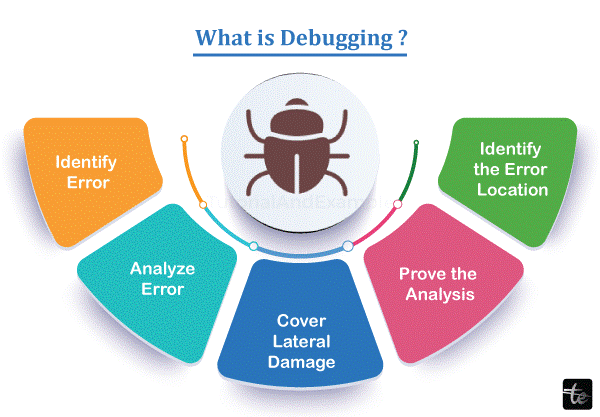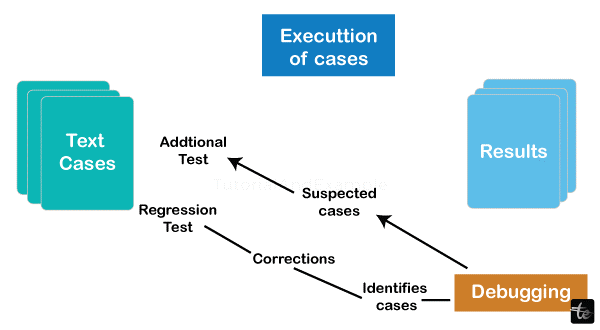Debugging Strategies in Software Engineering
Introduction
Since debugging aims to eliminate problems throughout the testing stages, this process is considered difficult and time-consuming. Debugging involves reproducing the circumstances under which an issue happened, examining the current condition of the program, and figuring out the reason for it. Programmers can use a debugger to track the operation of a program through each step while analyzing the value of variables, and they can also interrupt the execution whenever necessary to reassign program variables. Be aware that specific programming language packages come with a debugger that can be used to verify the program's code when it is being generated for errors. This article discusses certain guidelines to adhere to when debugging.

While creating a computer's operating system, application, or any other software, each developer has the possibility to run into flaws or faults in their code. In these situations, programmers utilize debugging and tools to detect defects in a code and eliminate errors from the program or code. There is a possibility of locating the issue along with where in the complete program it has occurred. This is a crucial procedure in software development to detect problems in any new program or process for application. To obtain the required output, mistakes such as fatal and rational mistakes can be located and eliminated. For various operating systems, commonly used debuggers include GDB, Microsoft studio, and LLDB.
The act of debugging entails problem-solving. Therefore, those who take part in debugging ought to be aware of every potential reason for a mistake before they begin troubleshooting. Debugging cannot be utilized when experimenting. In many cases, experimental adjustments frequently make an issue worse by introducing additional errors. A program's likelihood of having additional errors increases whenever a portion of its code contains a bug. As a result, the remainder of the program must be thoroughly checked for mistakes if a single part contains an error. It must be assured that whatever fresh code is introduced to a program to rectify faults is accurate and won't cause further errors. Regression testing should be carried out to confirm the new code's accuracy and ensure no new problems are created.
Importance of Debugging
Debugging is a crucial phase in the software development process since it ensures that the final product is operating according to schedule and satisfies the requirements of its consumers. Debugging is beneficial in the following ways:
- Debugging assists in finding and correcting flaws, which raises the caliber of the software and lowers the possibility that faults may appear in subsequent updates.
- Saving time and resources: Discovering problems or bugs earlier in the software development life cycle helps the business save money and time.
- Improving customer satisfaction: By verifying that the program is operating by specifications, debugging contributes to an enhanced user experience.

Steps involved in Debugging
Debugging involves multiple steps, including:
- Recognize the error: The next phase is to locate the program error after the issue has been recreated. Identifying the issue takes time until we've determined its precise position. As a result, we must test the software across all scenarios except when we encounter errors, at which point we must locate the problem.
- Specify the place: Whenever the issue has been located, the developer must examine the program's source code to determine its precise location.
- Cover lateral damage: The developer can move on to the next one whenever all of the tests have been appropriately assessed at this stage.
- Correct and verify: The developer can now correct and verify all the program's faults by testing the program to see if it is functioning properly or not. This is the final phase of the debugging process.
In this article, we will cover the following topics:
- The Debugging Process
- Debugging Strategies
The Debugging Process
Debugging can result in errors of various severity levels, from minor ones involving improper function input to catastrophic ones like system failures resulting in financial losses or injuries. Be aware that when the number of errors rises, so does the amount of work required to identify the root cause.
The following actions are taken in order to troubleshoot a software system's faults soon after they have been found:
- Defect confirmation/identification: A defect report is generated when a system has an issue. A software developer maintains and examines the error report and discovers answers to the inquiries below.
- Does the system have a flaw?
- Is the flaw reproducible?
- What is the mechanism's anticipated or ideal behavior?
- What behavior is being displayed?
- Defect analysis: Knowing the source of this problem serves as the next phase if the fault is real. Engineers typically debug by using a debugging tool (a debugger) and working through a program sequentially to determine the primary issue's reason.
- Defect resolution: The mistake is able to be fixed by implementing the necessary changes within the system whenever the fundamental root of the issue has been located.
The software undergoes additional testing after completing the debugging process to ensure any errors are unnoticed. Furthermore, when performing modifications to the software throughout the debugging process, it verifies whether no additional faults appear.
Debugging Strategies
Creating an effective debugging approach is crucial because debugging is challenging and time-consuming. With this approach, debugging may be carried out quickly and effectively. Debugging techniques that are frequently employed include testing, backtracking, induction, deduction, and brute force.
The less effective yet widely utilized debugging technique is brute force. It is typically employed whenever all other possibilities have failed. Here, memory (or storage) dumps are taken to perform debugging. There are a lot of output statements in the program that generate a lot of data, including intermediate values. The analysis of this data may aid in the identification of those mistakes' causes. Yet, employing a memory dump for identifying errors necessitates analyzing substantial data or unrelated information, which wastes energy and time.
Shifting through the specifics toward the overall picture allows mistakes to be debugged using this approach of "disciplined thought. The underlying premise of this methodology is that errors may be quickly found by examining the indications and relationships after the errors' symptoms and linkages among them have been determined. The following actions are taken to accomplish the induction strategy.
The following list includes many of the typical tactics used for debugging:
- Backtracking: The bug hunter starts at the line where the problem symptom is found and proceeds backward via the source code to identify the true defect.
- Cause Elimination Method: To determine the root of an instance of failure, a software developer creates an outline of potential causes behind an error and then runs examinations.
- Program Slicing: Under particular circumstances, Quality Assurance (QA) testers run a collection of program statements in the program (slice).
- Shotgun Debugging: Depending upon the developer's informed predictions, shotgun debugging is a trial-and-error, cross-your-fingers method of debugging.
- Rubber Duck Debugging: This technique involves a programmer going line by line through a program's code with a little rubber duck or another inanimate object. The goal is to foster adaptable, logical thinking.
- Pair debugging: Rather than demonstrating code to an inanimate component line by line, coders pair up and discuss code with one another.
Advantages of Debugging
- Better system quality: It assists in identifying and correcting software bugs, which raises software quality and increases dependability and performance.
- It decreases system delay: As flaws are found and fixed, software becomes more secure and is less likely to incur system downtime.
- Cost of Saving: Finding and resolving faults before the software's release could assist in lowering the price of correcting errors during manufacturing.
- Enhanced security: When faults or flaws emerged, they additionally boosted security. To ensure that consumers of the software can feel secure.
- Gaining a deeper grasp of the software: By identifying the problems, the programmer can learn more about the software.
- Enhanced Productivity: This allowed developers to function properly and effectively by enhancing their work efficiency.
Disadvantages of Debugging
- Time-consuming process: Whenever the program developer cannot locate the issue within the product's code, debugging may be time-consuming.
- Debugging may prove challenging: As I previously mentioned, once a developer cannot locate a bug in the code, the process gets difficult and time-consuming.
- It may be expensive if a software client compensates the programmer to locate the problem in the code. The cost increases if the developer is unable to identify the issue because the client's funds are now completely spent, and the developer must be paid repeatedly to finish the operation.
Conclusion
Throughout the essential phase of software development, known as debugging, problems in the application's source code are found and fixed. Using logging and debugging tools, copying the error, separating the problem, applying test-driven development to the project, and seeking guidance whenever necessary are good debugging procedures. By implementing these recommended procedures, programmers can raise the caliber of their software, reduce costs and time spent on it, and enhances consumer satisfaction.